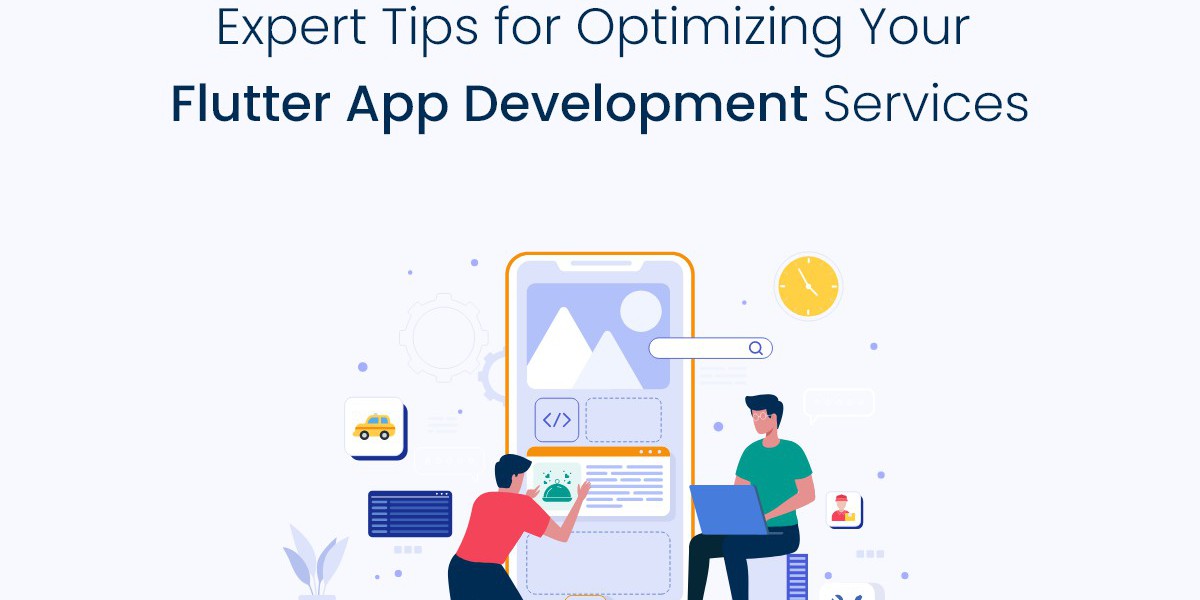Flutter has revolutionized the world of app development with its ability to create natively compiled applications for mobile, web, and desktop from a single codebase. However, to truly leverage the power of hire Flutter developers and ensure your app stands out, it’s essential to follow best practices and optimization techniques. In this blog, we will delve into expert tips for optimizing your Flutter app development services.
Understanding the Basics of Flutter Optimization
What Makes Flutter Unique?
Flutter stands out due to its use of the Dart programming language and its rich set of pre-designed widgets. Its architecture allows for fast and smooth performance, but there are specific strategies to enhance this further.
Importance of Optimization
Optimizing your Flutter app ensures better performance, a smoother user experience, and reduced load times. This not only improves user satisfaction but also enhances your app’s rankings on app stores, leading to higher downloads and engagement.
Code Optimization Techniques
Efficient State Management
Understanding State Management
State management is crucial in Flutter as it dictates how your app reacts to user inputs and changes over time. Efficient state management can significantly improve app performance.
Popular State Management Solutions
Utilize well-established state management solutions like Provider, Riverpod, Bloc, or GetX. Each has its advantages, so choose the one that best fits your project requirements.
Minimize Rebuilds
Identifying Rebuild Triggers
Frequent and unnecessary rebuilds can slow down your app. Use the Flutter DevTools to identify what triggers rebuilds and optimize those parts of the code.
Stateless vs. Stateful Widgets
Use StatelessWidgets whenever possible, as they are more efficient than StatefulWidgets. Only use StatefulWidgets when you need to manage the state within the widget.
Optimize Widget Tree
Keeping the Widget Tree Shallow
A deep widget tree can lead to performance issues. Keep your widget tree as shallow as possible by breaking down complex widgets into smaller, reusable components.
Avoiding Overlays and Complex Layouts
Complex layouts and multiple overlays can hinder performance. Simplify your layouts and avoid excessive use of overlapping widgets.
Performance Optimization Techniques
Utilizing Asynchronous Code
Use asynchronous programming with async and await to perform tasks like network requests, file I/O, and database operations without blocking the main thread.
Handling Long-Running Tasks
Offload long-running tasks to a background isolate to keep the UI responsive. This prevents the main thread from being bogged down by heavy computations.
Image and Asset Optimization
Compressing Images
Large image files can slow down your app. Compress images without sacrificing quality using tools like TinyPNG or ImageOptim.
Using Vector Graphics
Whenever possible, use vector graphics like SVGs. They are resolution-independent and usually smaller in size compared to raster images.
Caching Strategies
Implementing Caching
Implement caching strategies for frequently accessed data. Use packages like CachedNetworkImage for image caching and hive or shared_preferences for data caching.
Lazy Loading
Implement lazy loading for images and data to load content only when it is needed. This reduces the initial load time and improves performance.
UI/UX Optimization Techniques
Leveraging Flutter’s Animation APIs
Use Flutter’s built-in animation APIs to create smooth and engaging animations. Avoid custom animations that can be resource-intensive.
Limiting Animation Scope
Limit the scope of your animations to necessary areas. Overuse of animations can lead to performance bottlenecks.
Responsive Design
Adapting to Different Screen Sizes
Ensure your app adapts to different screen sizes and orientations. Use Flutter’s built-in responsive design features and media queries to create a consistent experience across devices.
Testing on Multiple Devices
Test your app on multiple devices with varying screen sizes and resolutions to ensure it looks and performs well universally.
Accessibility
Implementing Accessibility Features
Make your app accessible to all users, including those with disabilities. Implement accessibility features like screen reader support, proper labeling, and high-contrast themes.
Testing for Accessibility
Regularly test your app for accessibility using tools like Flutter’s Accessibility Scanner to identify and fix issues.
Testing and Debugging Optimization Techniques
Writing Unit Tests
Write unit tests to validate the functionality of individual components. This ensures that each part of your app works as expected.
Integration and Widget Tests
Implement integration and widget tests to verify the interaction between different parts of your app. This helps catch issues early in the development process.
Debugging Tools
Using Flutter DevTools
Leverage Flutter DevTools for debugging and performance profiling. This tool provides insights into your app’s performance and helps identify bottlenecks.
Logging and Error Tracking
Implement logging and error tracking using tools like Sentry or Firebase Crashlytics. This helps monitor app performance and identify issues in real-time.
Deployment Optimization Techniques
Reducing App Size
Remove unused resources, assets, and code to reduce the app size. Tools like Dart’s tree shaking can help eliminate dead code.
Using ProGuard for Android
Use ProGuard for Android to shrink, obfuscate, and optimize your code. This reduces the APK size and improves performance.
Ensuring Compatibility
Cross-Platform Compatibility
Ensure your app is compatible across different platforms and devices. Use platform-specific code judiciously and test thoroughly.
Updating Dependencies
Regularly update your dependencies to the latest versions. Updated libraries often come with performance improvements and bug fixes.
Conclusion
Optimizing your hire Flutter app developers services involves a comprehensive approach that spans code efficiency, performance enhancement, UI/UX improvements, thorough testing, and streamlined deployment processes. By implementing these expert tips, you can ensure that your Flutter app is not only high-performing but also offers an exceptional user experience. Remember, continuous monitoring and iterative improvements are key to maintaining the optimal performance of your app. Stay updated with the latest Flutter advancements and best practices to keep your app ahead of the competition.



